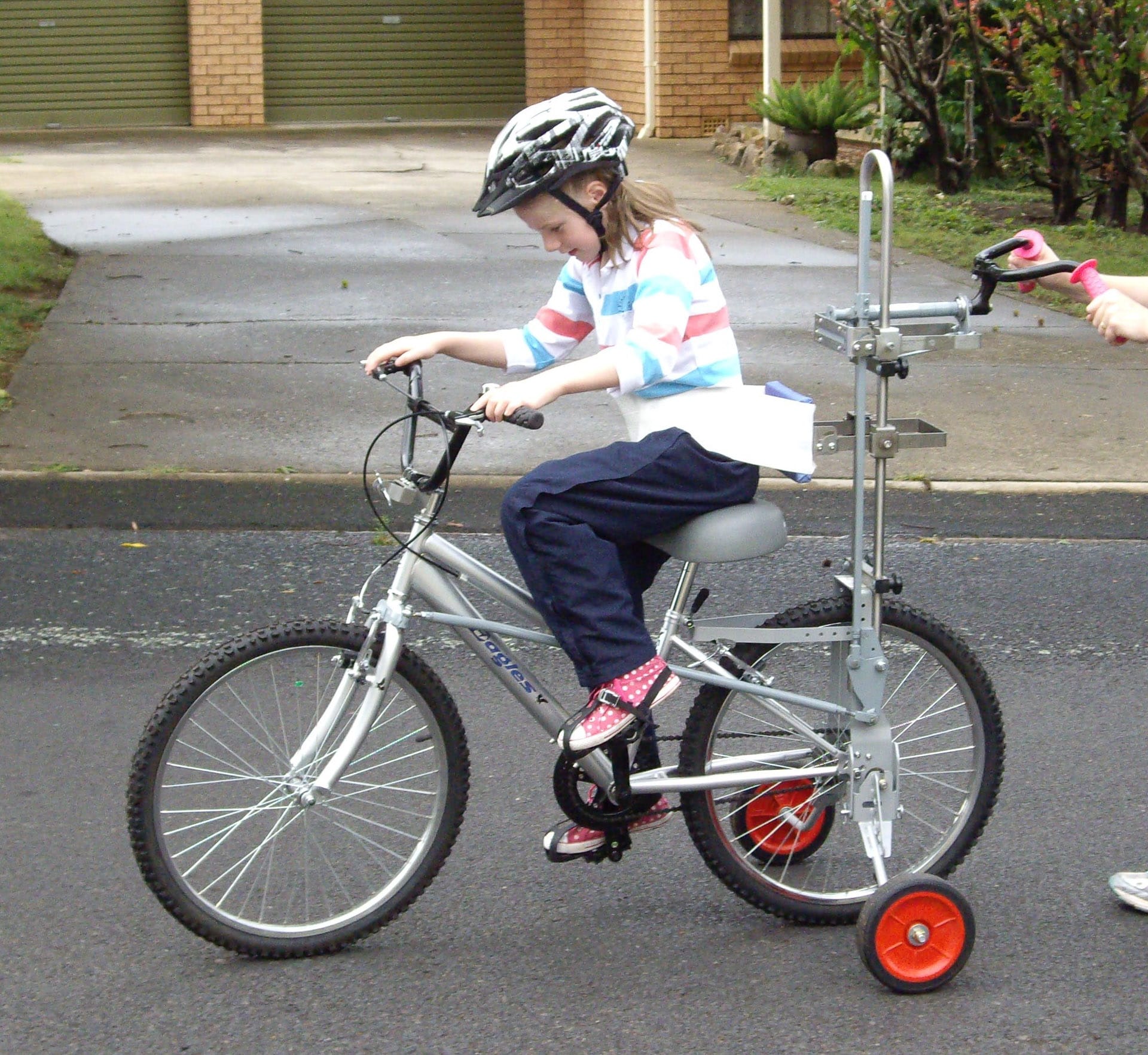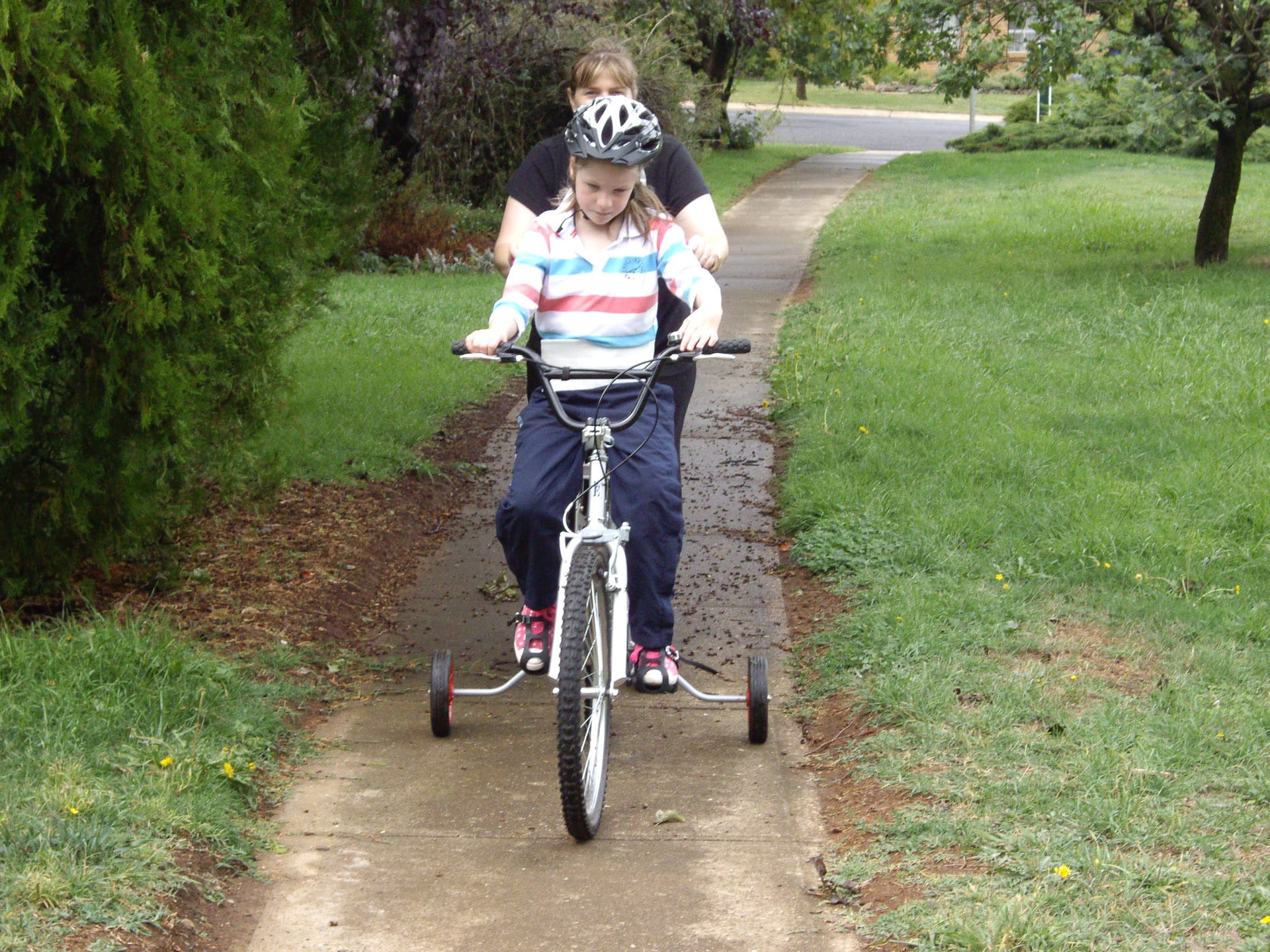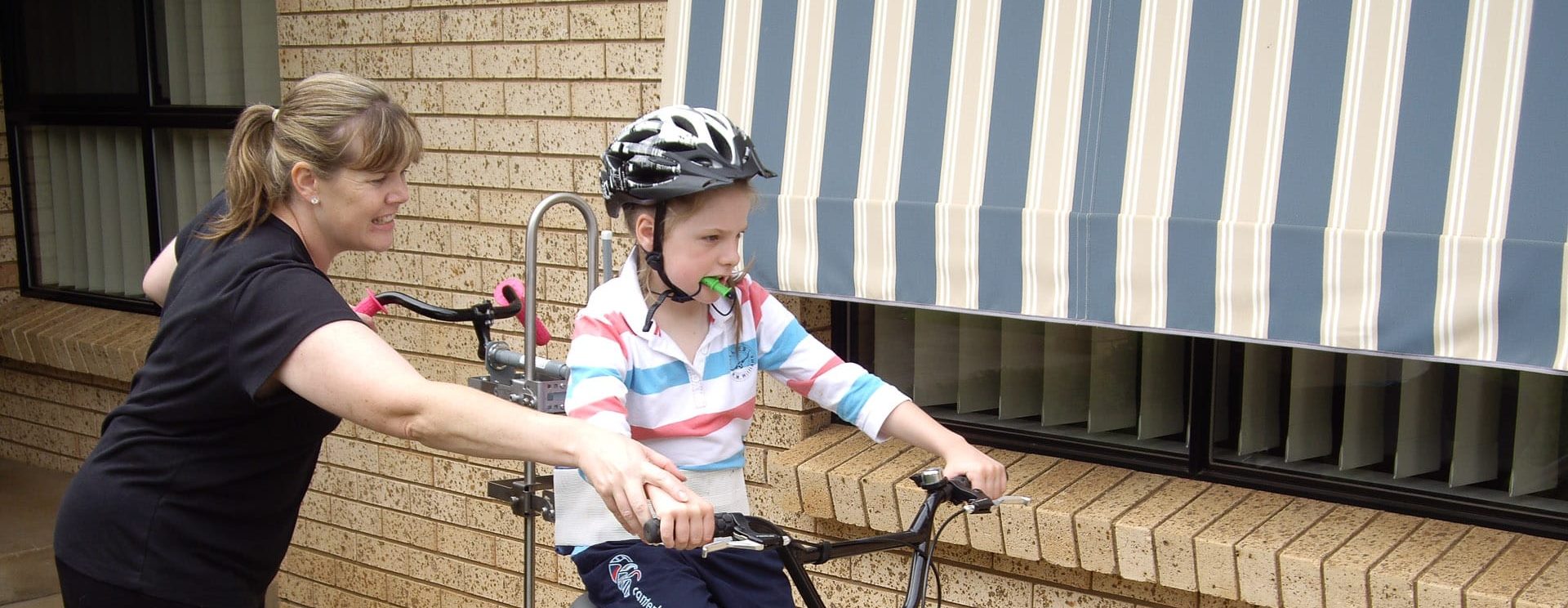Payton has autism and a global developmental delay. She is also nonverbal.
Most afternoons her mum Renai takes her for a walk around the local neighbourhood as Payton loves being outdoors and active. Renai thought that these outings would be more fun for Payton if she could ride a bike.
“When she was younger Payton loved to ride her bike. Her balance and gross motor skills aren’t too bad,” says Renai. “As she got bigger, there were no bikes available to give her the extra support she needs.”
Payton’s Occupational Therapist told the family about a TAD Freedom Wheels assessment day that was to be held in Bathurst and the family went along to try a bike.
At the clinic, TAD Occupational Therapist Jessica Canacott, assessed Payton’s needs and trialled her on a 24 inch bike.
“The outrigger wheels are so good,” says Renai. “The postural support and strap around her waist gives peace of mind. The foot cups are important too, although she understands the concept of pedalling, they really help to keep her feet in the right place.”
Payton trialled the bike with a towbar on the front to enable her mum or dad to pull the bike.
However, when she was a toddler, Payton’s bike had a handle on the back to enable her parents to push her. Payton was comfortable with this and her parents were keen to have a Freedom Wheels bike with this feature
TAD volunteer and former power station engineer, Dick Smith from the TAD Central West group, took on the job of making and fitting a one off, custom ‘rear steer modification’ to the bike. The rear steer modification allows the front wheel of the bike to be steered by a handlebar located at the back of the bike. This additional handlebar is positioned at the rider’s head height on the high-riser.
The rear steer works by turning the handlebars to the left or right, just as a regular handlebar works. Dick also fitted a steering limiter.
This prevents the rider from over-steering and also prevents the person using the rear steer from over stretching the rider’s arm.
Control from the rear steer is transmitted through a series of levers and links between the rear steer and the front forks. These links are arranged so as not to impinge on Payton’s leg movements.
“It worked out well. It’s very strong and the rear handlebars are at a suitable height for the adult at the back,” explains Dick who has volunteered with TAD for 16 years.
“Dick is a lovely man. He was so professional and checked in with us on his progress,” says Renai. “When he was finished we picked it up from him and he showed us how to dismantle the bike to fit in the car and how to put it back together again!”
Payton’s riding is improving every day and her mum and dad take her for rides regularly.
“When she gets on the bike her face lights up. When she knows that we are helping with the steering she can relax and concentrate on other things. It’s fantastic.”



